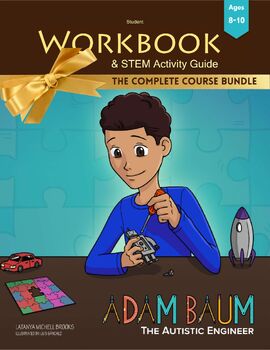Adam Baum: The Autistic Engineer Classroom Bundle
- Zip
- Easel Activity
- Easel Assessment

Products in this Bundle (9)
showing 1-5 of 9 products
Bonus
Description
Adam Baum: The Autistic Engineer
Welcome to the Grow with STEM Teacher Pay Teachers store, your one-stop shop for engaging and standards-aligned STEM learning resources! Our store features a diverse range of lessons spanning Science, Technology, Engineering, Art, Math, Reading, and Social-Emotional Learning (SEL) – because we believe in nurturing the whole student.
Grow with STEM's "Adam Baum: The Autistic Engineer," is an inspiring book authored by me, available on Amazon. Join Adam on his journey towards becoming a mechanical engineer, where students not only learn alongside him but also lend a helping hand when needed. This immersive experience empowers students to embrace diversity and unlock their potential as future engineers.
Our lessons are meticulously designed to align with educational standards and cater to various learning styles. Each resource includes a wealth of activities, assessments, projects, digital games and easel activities to keep students actively engaged and excited about learning.
Whether you're a teacher looking to enhance your STEM curriculum or a parent seeking enriching educational materials, our Teacher Pay Teachers store has everything you need to spark curiosity and inspire lifelong learning. Come explore, learn, and grow with us!





